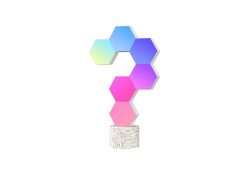ChatGPT is a powerful chatbot that can help you accomplish a variety of tasks with ease. Learn how you can make ChatGPT work for you and improve your productivity.
Technology is ever evolving, and in the past 10 years alone, we’ve seen some ground-breaking innovations that have undoubtedly made our lives easier – with artificial intelligence assistants (hey, Siri!) being a prime example. While we may not be living in a world with flying cars and robots that perform our daily chores, recent AI innovations have taken the world by storm. ChatGPT is one such innovation.
When ChatGPT was launched by artificial intelligence research lab OpenAI in November 2022, it made world headlines owing to its ability to generate accurate and coherent content, something previous chatbots struggled to do.
According to research done by Union Bank of Switzerland (UBS), ChatGPT is the fastest growing app in history. In fact, OpenAI CEO Sam Altman tweeted that in just five days following its launch, ChatGPT had amassed a whopping one million users.
What exactly is ChatGPT?
Simply put, ChatGPT is a chatbot that can be used to generate ideas, write short essays, create code and much more when given short text prompts. GPT stands for Generative Pre-trained Transformer, which is a type of machine-learning model that uses deep-learning techniques to generate human-like text.
ChatGPT is revolutionary not just because of its content-generating abilities, but also because it’s currently free for anyone to use – it’s still in its beta (testing) stage. However, because of this, the software is often at capacity.
As a solution, OpenAI launched a paid-for subscription called ChatGPT Plus, which will provide users with priority access, and access to new features and improvements, for about $20 (R364) a month. ChatGPT is not the only chatbot out there, but many others (Microsoft’s Bing, Google’s Bard) have long waitlists or require you to pay a monthly premium to access the service.
How it can help you
If you’re not sure how you can make ChatGPT work for you in a professional context, there are myriad how-to guides and examples of prompts available online that are applicable to almost every industry, from drafting business plans and writing product descriptions to providing fast and accurate responses to customer inquiries and complaints. It’s particularly useful in the marketing- and advertising fields as it can generate helpful thought-starters in company brainstorms.
Aside from being a helpful business tool, it’s also handy for accomplishing personal day-to-day tasks, such as drafting emails, creating basic shopping or to-do lists, and even customising workout plans.
Ethics and limitations
The creepily accurate results ChatGPT generates have caused many people to debate about the ethics of using artificial intelligence, while others are more concerned that this innovation will make their jobs redundant.
There’s also the issue of users passing AI-generated content off as their own, which is especially problematic in the education space, where students could use the chatbot to write or summarise essays.
While ChatGPT and similar forms of AI can help you lay the groundwork, they will never fully replace human intelligence. There are many jobs that require human creativity and critical thinking, which is something AI has yet to perfect.
And there is always the possibility of inaccurate information. Users are warned about this with a disclaimer that appears on the ChatGPT site, stating that the system ‘may occasionally generate incorrect or misleading information and produce offensive or biased content. It is not intended to give advice.’
AI will always be a contentious issue, but in this age of constant innovation and change, it can be helpful to consider tech as a tool that can help us work smarter and make our lives easier, rather than hinder us.







